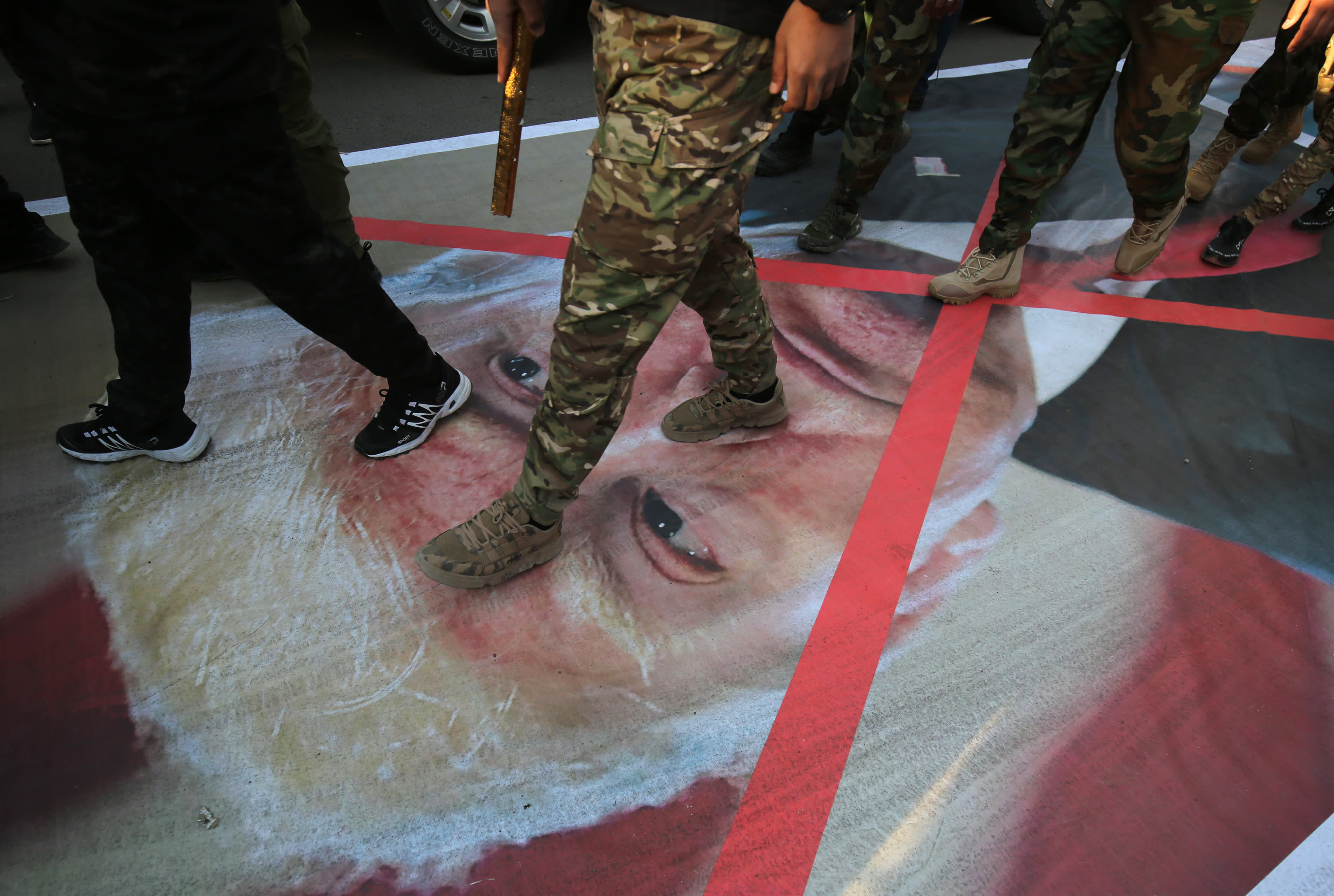Members of the Hashed al-Shaabi paramilitary force walk above a portrait of US President Donald Trump as they hold a condolences meeting following the killings of Iranian commander Qassem Soleimani and Iraqi paramilitary commander Abu Mahdi Al-Muhandis, on January 6, 2020 in Karrada in central Baghdad.
Ahmad Al-Rubaye | AFP | Getty Images
The latest bout of market volatility stemming from rising tensions between Iran and the U.S. could be short lived, if history is any indication.
Data compiled by Barclays shows that, while the S&P 500 averages a loss of about 0.5% one month after the countries face off, the broad index gains an average of 2.9% three months after a conflict. The S&P 500’s gains extend to 5.5% six months following a crisis.
So far, investors are betting this latest dust-off will only be a transitory headwind since neither country has indicated a desire to ratchet up tensions. Also, U.S. energy independence offsets concerns of an oil-supply disruption hurting the U.S. economy.
“Generally, when there is a surprise of any kind, the immediate reaction on Wall Street is to hit the sell button,” said Randy Frederick, vice president of trading and derivatives at Charles Schwab. “If it’s something in the Middle East, that usually means a spike in oil prices. We’ve seen all of those and, historically, these shocks tend to be relatively short-lived.”
“The patterns and moves in the stocks market have been indicative of that and that’s what most traders believe,” Frederick added.
On Tuesday night, Iran attacked an Iraqi airbase that was hosting U.S. troops. The attack came in retaliation for the U.S. assassination of Gen. Qasem Soleimani, a top-ranking Iranian military official.
News of Iran’s attack on Tuesday sent U.S. stock futures tumbling. At one point, Dow Jones Industrial Average futures were down by more than 400 points. Crude futures spiked more than 4% while gold prices surged to their highest level in nearly seven years.
However, it was later revealed that Iran’s airstrike did not hit any major oil infrastructure. There have not been any reports of casualties so far, either.
Meanwhile, Iran did not hint at a desire to further escalate this conflict. In a tweet, Iranian Foreign Minister Mohammad Javad Zarif said: “We do not seek escalation or war, but will defend ourselves against any aggression.”
This led to a massive turnaround in U.S. stock futures, which erased most of their losses by Wednesday morning. Wall Street carried that momentum through the stock-market open. The major averages posted slight gains and the Nasdaq Composite hit a record high.
Oil, meanwhile, gave back its massive gain and traded more than 2% lower. The fact that no major oil-production infrastructure was damaged decreased expectations of a disruption to the global energy supply. Also, the U.S. is now the biggest oil producer in the world, meaning that a supply loss from Iran could be absorbed.
Safe havens such as gold and Treasurys also gave back most of their overnight surge.
“The safe-haven trade has taken a backseat to the risk-on trade,” said Komal Sri-Kumar, president of Sri-Kumar Global Strategies. “The market is taking a pause.”
But Kumar urged the market is still “at the knife’s edge,” waiting for further clarity on how these events unfold. “Do not think for a second that this is the all-clear.”
Stocks do well after other conflicts in the Middle East as well
Stocks also have fared well after the U.S. squares off with other countries in the Middle East. A CNBC analysis using Kensho showed the S&P 500 has risen an average of nearly 1% in the month after a Middle East crisis event.
The index averages a gain of nearly 3% after three months. The analysis looked at the market reaction to 20 crisis events in the Middle East over the past three decades.
—CNBC’s Michael Bloom contributed to this report.
